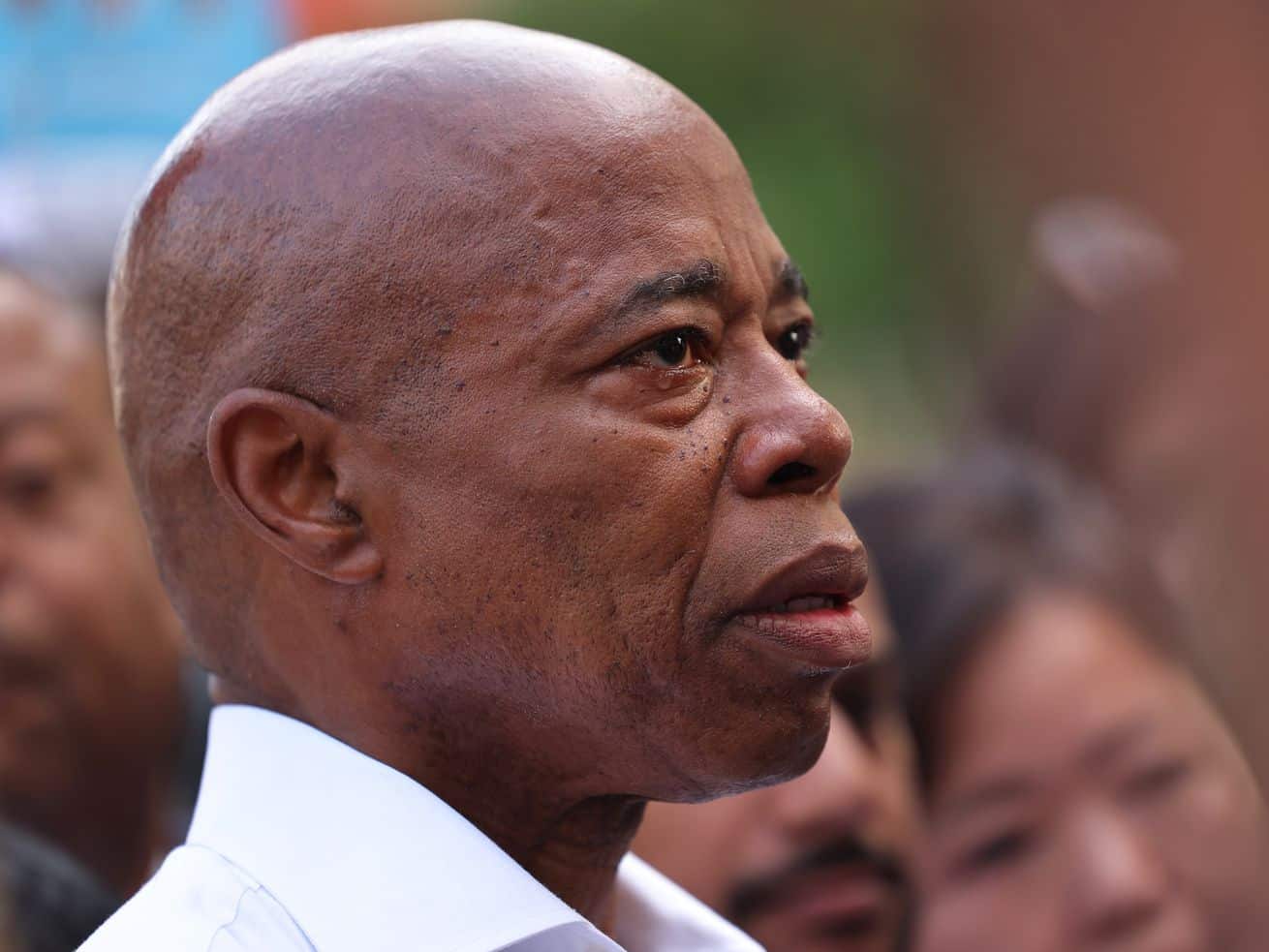After a botched tally Tuesday, the board of elections tried again.
New York City’s board of elections tried a do-over with its ranked-choice voting tally Wednesday, reallocating ballots from last week’s mayoral race for the second time. (Their first attempt ended in a debacle, as they mistakenly included about 135,000 “test” ballots in the count.)
The announcement of the still incomplete tally showed first-round leader Eric Adams remaining ahead, with Kathryn Garcia leaping into a close second place as other candidates like Maya Wiley and Andrew Yang were eliminated from the tally. (This is quite similar to the incorrect tally from yesterday, suggesting the “test” ballots didn’t end up changing all that much.)
It’s important to understand that these results are just placeholders. More than 100,000 absentee ballots remain uncounted, so no one has actually been “eliminated.” The tally is a simulation, showing what the ranked-choice voting reallocation would look like for only the votes that have been counted so far. But it’s all subject to change as the remaining votes are counted, which could take many more days.
Still, the preliminary tally gives us our first real glimpse into what reallocation could end up looking like, and the impact ranked-choice voting has had on the race. And there are two major takeaways.
This is still a race
The first-round preliminary tally on Wednesday showed Eric Adams with about 32 percent of the vote, compared to about 22 percent for Maya Wiley, 19 percent for Kathryn Garcia, 12 percent for Andrew Yang, and the rest for other candidates.
Then the magic of ranked-choice reallocation came into play, and there was a shuffle.
In a ranked-choice count, the lowest-ranking candidates are eliminated, one by one. Ballots for eliminated candidates are reallocated to whoever those voters ranked next (if anyone). Once all the candidates with single-digit support were eliminated, there were four remaining, and this is how the results looked:
/cdn.vox-cdn.com/uploads/chorus_asset/file/22692540/Screen_Shot_2021_06_30_at_6.18.53_PM.png) NYC Board of Elections
NYC Board of ElectionsAndrew Yang is in fourth place there, so he was eliminated next. And once he was, and his voters were reallocated, Garcia very narrowly passed Wiley to get into second place. (Yang and Garcia campaigned together on the final weekend of the race.)
/cdn.vox-cdn.com/uploads/chorus_asset/file/22692542/Screen_Shot_2021_06_30_at_6.20.24_PM.png) NYC Board of Elections
NYC Board of ElectionsThis reallocation of Yang’s voters is crucial, because now it’s Wiley who is in third place out of three candidates, by just a few hundred votes. So with the votes NYC has counted so far, Wiley gets eliminated. (Keep in mind, though, that this could change when absentee ballots come in, and Wiley could end up in second after all.)
Then, with Wiley out, the reallocation gets really interesting:
/cdn.vox-cdn.com/uploads/chorus_asset/file/22692543/Screen_Shot_2021_06_30_at_6.22.05_PM.png) NYC Board of Elections
NYC Board of ElectionsMany more of Wiley’s voters ranked Garcia as their next backup choice than Adams. So her votes propelled Garcia from 11 points behind Adams to just over 2 points behind.
This was not enough for Garcia to actually pass Adams. But again, this is just a preliminary count, and depending on how the absentee ballots break, it’s entirely plausible that she could do so. But Adams could also still win.
Many voters’ choices were eliminated before the final round
Ranked-choice voting’s supporters often say it produces a consensus winner: someone who has support, of some kind, from more voters than would be the case in a plurality winner system. But critics of ranked-choice voting often argue that it falls short of producing a winner backed by the majority of voters because of a phenomenon known as ballot exhaustion.
A ballot gets exhausted when all of the voter’s ranked candidates get eliminated. Some voters don’t even use all their ranking slots (in New York City, there were five), listing no backup candidates at all. Others use their slots entirely on candidates that end up eliminated.
So far, 819,614 New Yorkers cast a ballot in the Democratic mayoral primary. But in the final round of this preliminary count, 117,327 ballots were exhausted — 14.3 percent of the total.
Because of those exhausted ballots, another way to understand the final result in this tally would be:
- 43.7% Adams
- 41.9% Garcia
- 14.3% neither
And it does not seem that the eventual winner in this primary (whether it be Adams, Garcia, or Wiley) will actually be ranked on a majority of voters’ ballots.
Ranked-choice supporters would argue that this is still superior to a plurality winner system, where the first-round tally would have been the end of things, and voters would not have gotten the option to list “backup” choices.
But before ranked-choice voting, New York City had a runoff — if no candidate topped 40 percent, the top two vote-getters would have headed to a runoff.
The case against runoffs is that turnout tends to drop for them, but the case for them is that they concentrate the mind by giving voters a binary choice rather than a crowded and confusing field.
And it’s certainly debatable, at least, whether the new system is better at channeling “the will of the voters” than a runoff where Adams and Garcia (or Adams and Wiley) would have gotten to make their cases against each other.
Author: Andrew Prokop
Read More



